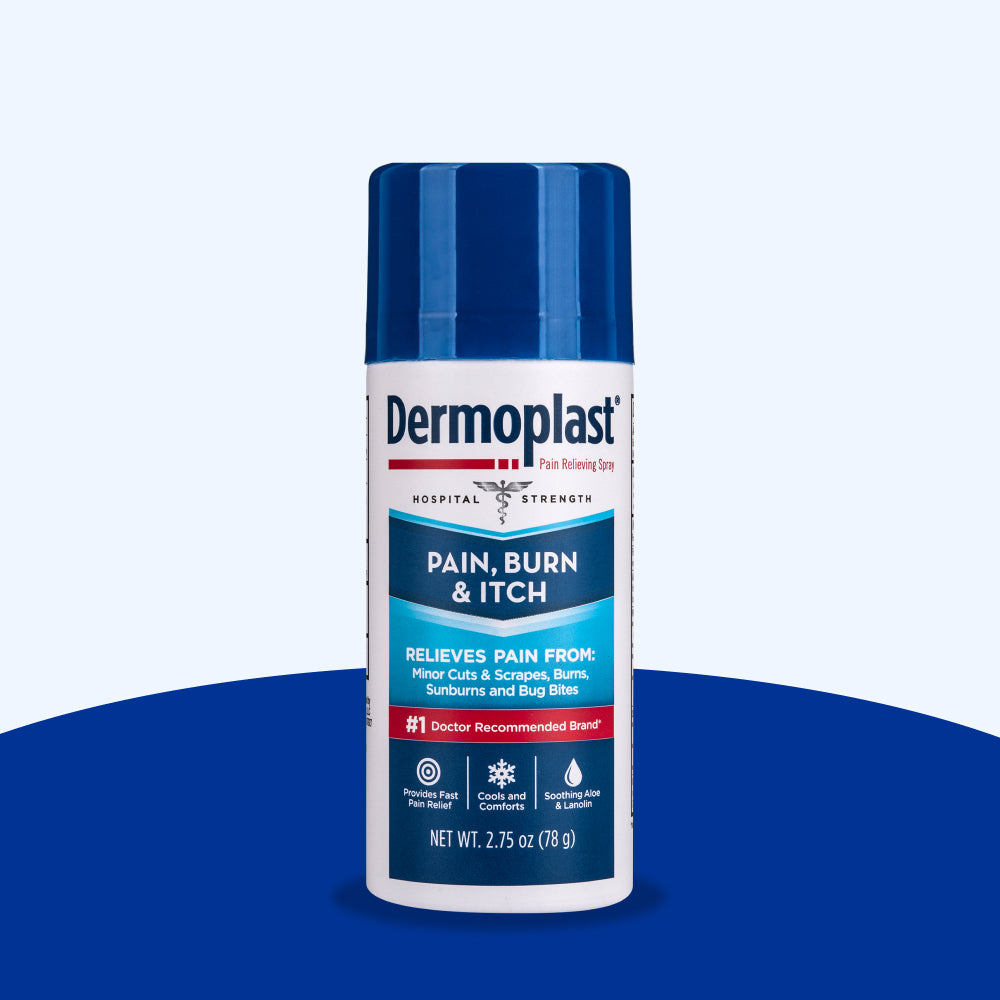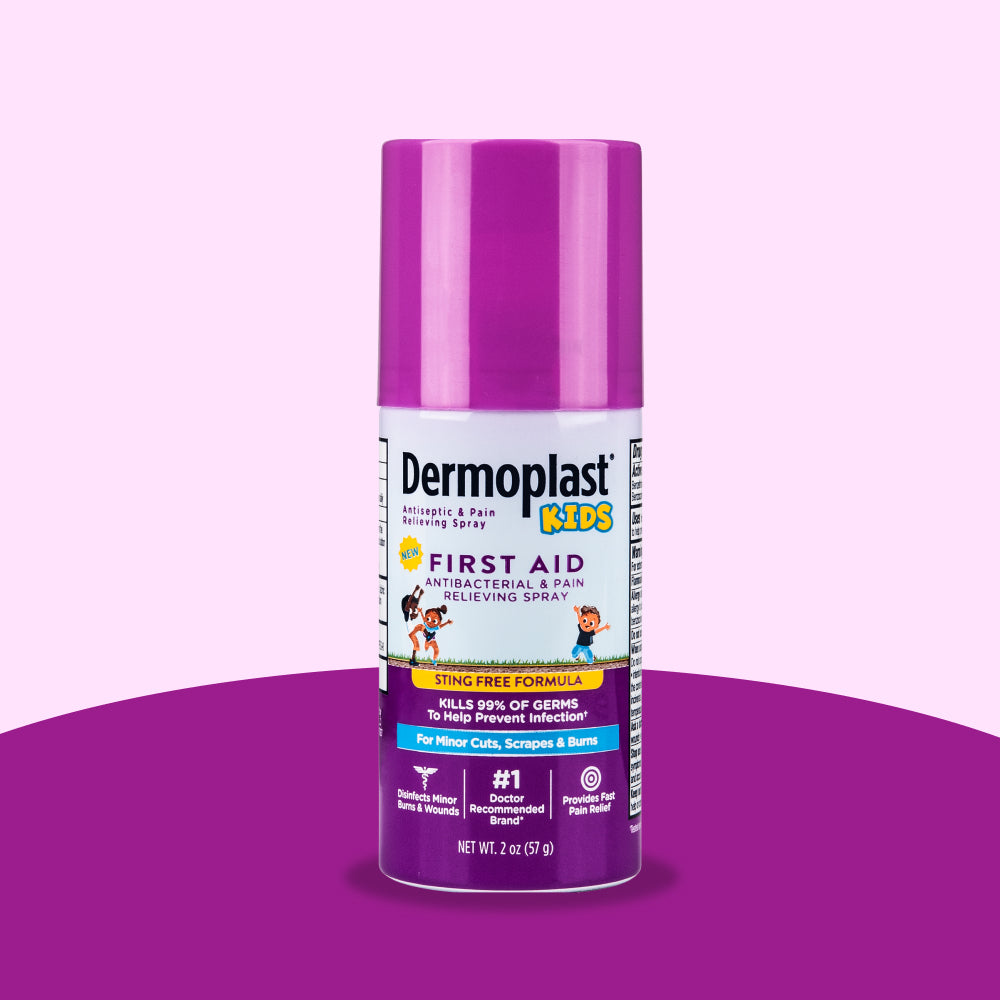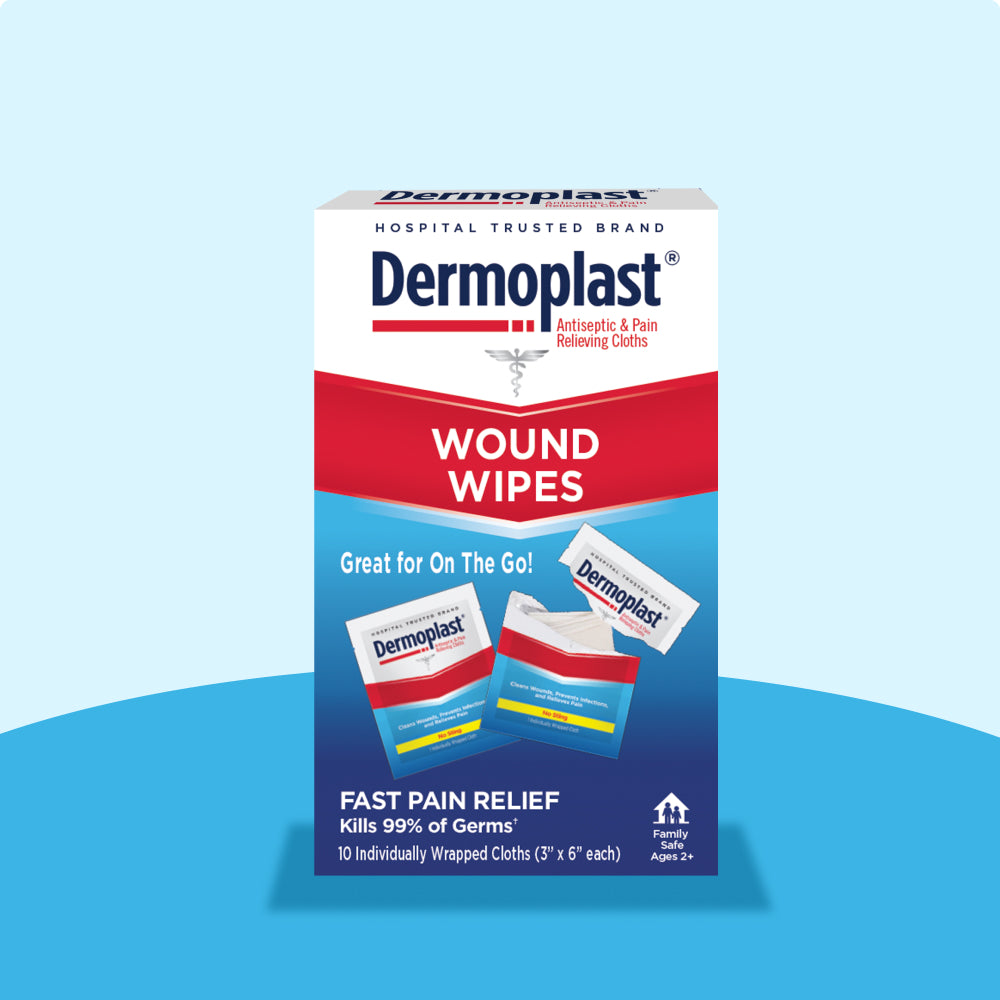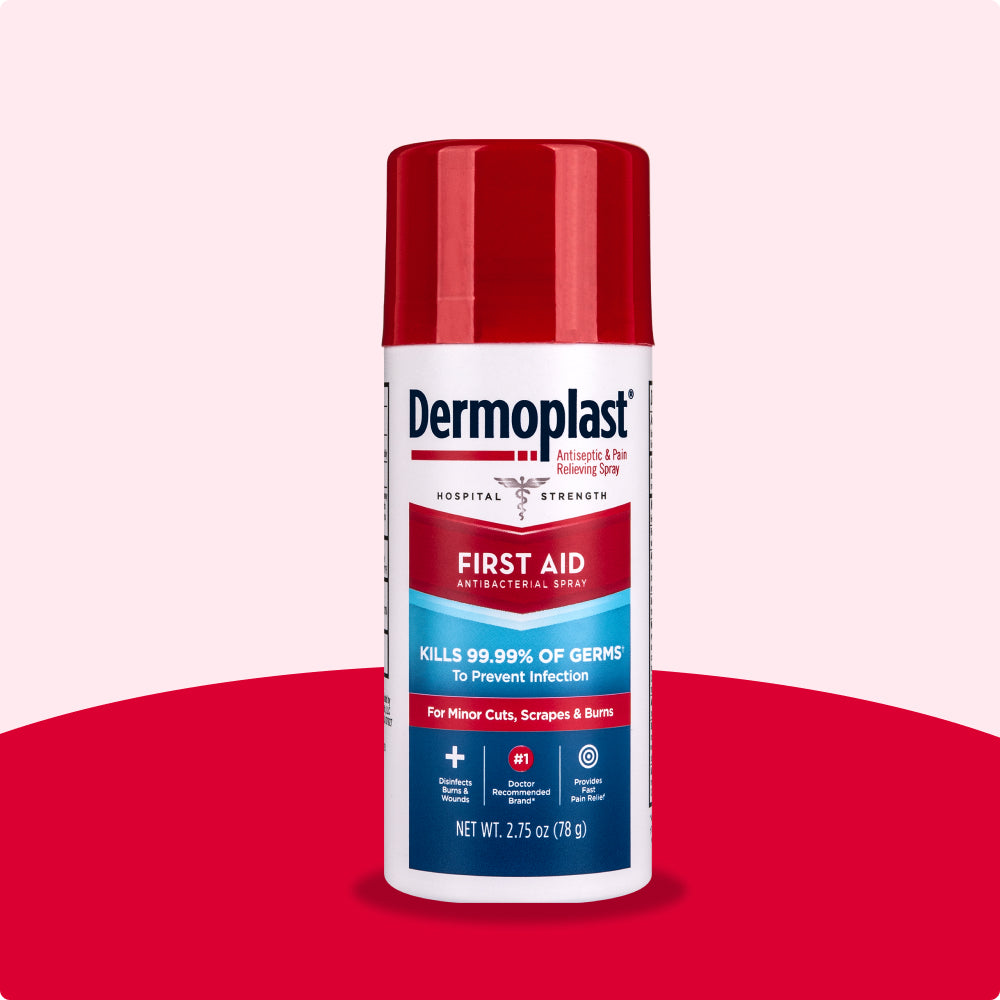
HOW TO TREAT A SCRAPE
STOP THE BLEEDING
by applying gentle pressure with a clean bandage or cloth. Also consider raising the injured area, if possible, to help slow the flow of blood3.
CLEAN THE WOUND
thoroughly as soon as possible, to reduce the chance of infection and scarring.1. To prevent infection, clean out any dirt and debris by using sterilized tweezers or flushing the scrape out with lots of cool, clean water3. Gently pat dry with a clean gauze pad4
.HELP THE SKIN HEAL
once the wound is clean. Applying petroleum jelly or an antibacterial ointment can help add to the healing process by keeping the scrape moist.3 Using Dermoplast provides pain relief, ingredients to keep the skin moisturized, and an antiseptic agent that helps prevent infection. Use as directed.1,3
COVER THE SCRAPE
with a bandage to promote healing by keeping the wound clean and helping prevent re-injury.3 Make sure to see a doctor if you see signs of infection, such as redness, worsening pain, drainage or swelling.
Be aware, a scrape may continue to ooze small amounts of blood. Be sure to keep an eye on the scrape during the healing process and check with a doctor if any of the following signs of infection occur: redness, worsening, pain, drainage or swelling.3,4





